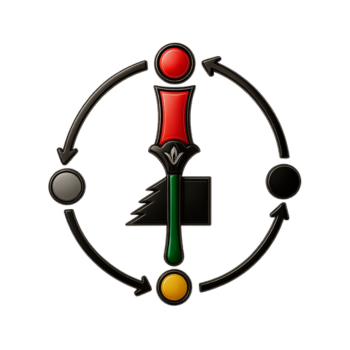-
In Ghana, the luxury evident at court, as the documents allow us to reconstitute it in detail, was equaled only by that of the Aegean period. The emperor, his heir apparent, the notables all literally dripped with gold. The pages, horses and dogs of the Tunkara were equally covered with it. People were literally living in gold, as is shown by an Al Bakri passage about the audiences of the king who was called both Tunkara and Kaya-Magan. According to him, only the king and his sister’s son, that is, the nephew who is heir apparent, were allowed to wear tailored clothes. All others follow the same religion as the Tunkara- i.e., the tradition-wore loincloths of cotton, silk, or brocade, according to their means. The men were shaven and the women shaved their heads. The king’s headpiece was made up of several gold caps wrapped in very delicate cotton materials. When he held an audience for the people, to hear their grievances and remedy them, he sat on a throne inside a pavilion around which stood ten horses caparisoned in gold materials. Behind him, stood ten pages carrying shields and swords mounted in gold; the sons of the princes of his empire stood to his right, dressed in magnificent clothes, their braided hair intertwined with gold threads. The governor of the city sat on the ground before the king and, all about, were the viziers, that is, his ministers, in the same position. The door of the pavilion was guarded by dogs of excellent breed who almost never left the king’s side: they wore gold and silver collars, from which dangled bells of the same metals. The sound of a drum (deda) made of a hollow piece of wood announced the opening of the session. The people came running, clapping hands, poured dust over their heads, and presented their grievances.
Through the description of one of the emperor’s audiences, we get an idea of how both the Tunkara and his retinue were dressed, the insignia they wore, how the pages were armed, the women coiffed, and so on. Alongside these audiences, or royal session of justice, which were common to Ghana, Mossi, Mali, and Songhai, There were no less general horseback rids through the capital. The Tunkara, like the Moro Naba, rode on horseback, followed by his entire court, through the various neighborhoods of the city, also to hear his subjects’ grievances and remedy them.
That, by and large, was the court ceremonial of Ghana, as the documents allow us to reconstitute it.
We must add that the emperor, according to Al Baki, lived in a stone castle, surrounded by a wall.(48) Idrisi is even more precise: according to him, the emperor lived in a fortified chateau, built in 1116, decorated with sculptures and paintings, and boasting glass windows. Understandably, Delafosse was reluctant to accept that text too literally.(49)
Idrisi wrote in 1150; he was one of the best Arab geographers of his time. In Sicily, he drew up the first navigational charts that were to be used in modern times. Nevertheless, it is customary to point out that in hi “Description of spain and Africa” he relates facts about this continent on which he was not as well informed as Al Bakir. However that may be, it is hard to believe that so scrupulous and thoughtful a geographer would invent out of whole cloth such percise details in describing the chateau.
Notes;
48. Idem., “Description de Ghana et moeurs de ses habitants,” pp. 327-330
49. Delafosse, Haut-Senegal-Niger (Paris: Ed. Larose, 1912), Vol. I, p. 15.
From the book:
“Precolonial Black Africa” pp. 82-83 by Cheikh Anta Diop

